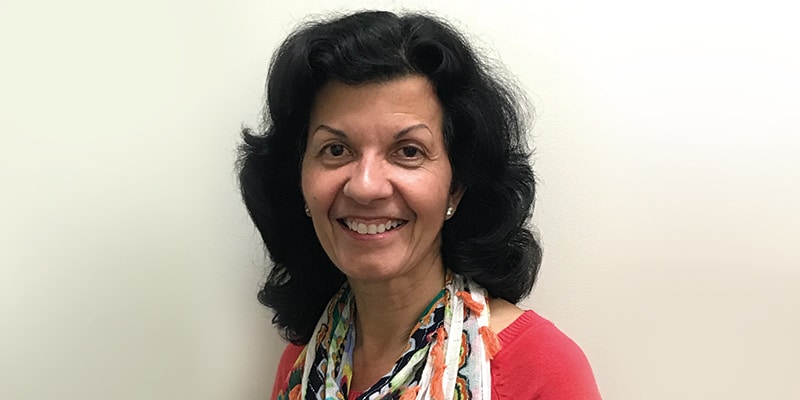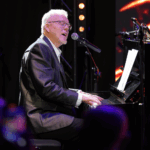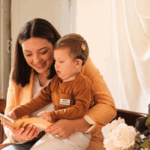MED-EL
Published Jan 16, 2019
“Changing To A MED-EL Implant Is The Best Thing I Ever Did”—Enid’s Story

For some people, being able to hear is a relatively quick process. But for others, it can take a lifetime.
60-year-old Enid Chapman has been severely deaf her whole life. After struggling with hearing aids as a child, she received her first cochlear implant in 2000 but found she still couldn’t understand speech in that ear. It wasn’t until receiving a MED-EL implant a few years ago that Enid started to hear speech easily for the first time in her life—a huge achievement.
Earlier this year, Enid was re-implanted in her original side with another MED-EL implant. The result? We asked Enid to tell us in her own words.
Deaf From Birth
My name’s Enid, and I live in Western Australia. I run the Perth CICADA group but I do lots of other community activities. I mainly help young people with disabilities, and other people with special needs. I also help the elderly through a church program. I’m with people a lot, and I like getting involved in conversations.
But it hasn’t always been that way. I was born deaf, but the doctors didn’t detect right away that I couldn’t hear. It was only when I was about two years old, when they tried to figure out why I wasn’t responding to certain things, that they realized I was deaf. The doctors couldn’t do much back then, because we were living in India and the technology didn’t used to be very good. When I was seven, my parents decided to migrate to England and I finally saw an audiologist. He told my parents, “Do you realize your daughter’s deaf and she’s lip reading?”
Learning To Speak
They decided to make me wear hearing aids. They tried to use the right ear, as I could get some sound out of it. My left ear was unusable so they only gave me one hearing aid. I used sign language when I was young and maybe said a few words. In England I was sent to a special school, with a little deaf unit attached to the actual school. I had a lot of friends and they all used sign. But in the deaf unit, they actually taught us to use our vocal chords.
We had to read out aloud—they used to make us put headphones on so we could hear our voice, and then made us enunciate the words correctly. I realized that to be able to communicate with other people, you’ve got to be able to use your vocal chords. So from then on I was able to speak properly. I don’t have that deaf voice as some people have.
When I came to Australia aged 14, I still had trouble with education. I couldn’t cope in the classroom and it was so difficult. Then I saw a lovely man, Mr Garcia. He told us, “You can still use the other ear, I don’t know why they are saying you can’t use it. You need some balance of sound around you”. So he gave me a hearing aid in the other ear when I was around fifteen years old. The ear molds shrank, and I got a lot of feedback. It was better but I still struggled.
Going For A Cochlear Implant
I was teaching a lip reading class when I found out about cochlear implants. I had a lot of different clients—some of them wore hearing aids and some of them were contemplating getting cochlear implants. In those days it was fairly new and everyone was just learning about what cochlear implants do and who they were suitable for. One lady was suitable. She had the operation, and when she came back to class, she started telling us how well she was doing. And of course all the others wanted to follow suit.
When my turn came they said “Enid, why don’t you go for a cochlear implant?!” And I said “I don’t know. I already wear two hearing aids. I’m not sure if that’s going to work for me.”
It was quite a few years while I decided whether I should go for the cochlear implant or not. With everything I’d heard from other people, I thought maybe it was time for me to give it a go. I was getting a lot of feedback noise from my hearing aids, and that feedback was giving me a lot of headaches. I was going into a pit of depression, and that affected me mentally. I found it very hard to socialize because of the feedback, which was affecting my thoughts, and my ability to help others. I thought “I better help myself if I’m going to help other people”. So that’s the reason why I finally decided to have the implant.
First Cochlear Implant
My first implant was done in 2000, and I had an implant from a different company as MED-EL was not available in Australia back then. In those early days I felt more like a guinea pig. They wanted to do the worst ear, which was my left ear, and they didn’t put the electrode array fully into my cochlea in the hope that I could retain some sound. I had to learn to understand the sounds, it took a long time because my better ear was doing most of the work. Gradually I learnt how to hear but I couldn’t really pick up speech. I only heard the environmental sounds.
At first everything sounded quite robotic. Women’s and children’s voices sounded so much alike. And men’s voices were very similar so it was hard to differentiate between a woman’s voice and a man’s voice, or even a child’s voice. They all sounded virtually the same because of that robotic sound. But I got used to it. My brain started to pick up the natural side of the sound, and everything became more natural. Because it was my worst ear and I’d never really had much speech, I still had to do lip reading but I was able to pick up environmental sounds, and that was very helpful.
Second Cochlear Implant
I had my right ear done in 2011. Getting that implant actually took a lot longer because I didn’t want to give up the residual hearing that I had. But I had a lot of trouble with the hearing aid because of feedback. The feedback in my left ear hadn’t been so bad but the right ear was, because I could hear more, so I heard more of the feedback, which made it even worse. To eliminate that feedback, I knew that it was time for me to have another cochlear implant.
The medical team were doing the tests and saying that as my first implant wasn’t that successful, they thought they’d try MED-EL. MED-EL had only just come to Australia. Their implants offered lower tones, and more of the natural tones, so that’s what made me keen to try it. Their electrode arrays were also designed to preserve as much of your residual hearing as possible, and I really wanted to keep as much natural hearing as I could.
Having the MED-EL implant is the best thing I ever did because it sounds so much better.
Maybe it’s because it’s in the better ear that I had, but I was able to recognize sounds instantly. Everything was instant. The mapping side of it, to get the levels right, that took time. But it didn’t take as long as my first implant. The MED-EL one was much easier.
Life With Cochlear Implants
After having the second implant done, life was quite good. I was able to communicate a lot better. I felt more comfortable being involved in all my community projects. I made more friends and I interacted more. I basically forced myself to be involved in noisy places, meet more people, and help people. Because I said to myself, I can’t really help anyone if I stay at home. So I had to get out. It didn’t matter if it was a noisy place, I still went out.
When meeting people, I try to see the funny side of the situation. If I can’t understand what a person is saying, I’ll explain to them: “Look I can’t really hear you very well, did you mean this?” And then they’ll have a good old laugh and it’s really good because you get to educate other people about how you’re feeling and what you’re going through, and they can accommodate you. But staying at home and not doing anything and not helping anybody, it’s not helping me either. So that’s the reason why I get involved with other people as much as I can.
Third Cochlear Implant
I recently had my left ear re-implanted and it’s been a big change, a very big change. The first thing I noticed was that I can actually hear speech in my left ear. At activation, I was so excited to be able to hear the actual words that are being said.
On the train journey home I cried tears of sheer joy and thankfulness for being able to hear speech in that ear for the first time in 60 years.
I’m doing all the rehabilitation exercises that Australian Hearing gave me. I do a lot of listening exercises, taking one processor off and making the other one do all the work. In my left ear, speech does not yet sound totally natural. Voices are different. They sound like they’re either whispering or they have a gurgle sound in their voice. I’ve had my right implant a lot longer, so it’s more natural. I can hear like a lisp in someone’s voice, and I can even hear accents. I was with a lady and I said “Oh, are you from South Africa?” and she said “How can you tell my accent?!”
I can’t pick up accents yet on my left side, it’s early days and I’m still trying to get the balance right. The environmental sounds and the speech, they’re not synchronizing yet in some way. My right ear’s trying to dominate everything, so it’s just a process that I’m going through at the moment. My audiologist, Chris Broadbent, has been amazing. He has boosted my map by bringing the voices closer to a comfortable level and it’s truly been such a rewarding experience you will never know. I’m now even able to appreciate music, which is truly beautiful and out of this world.
For me, getting a MED-EL cochlear implant was a real miracle.
Thanks, Enid!
Find out how MED-EL’s electrodes are designed to make the most of your residual hearing.
Have you heard about SONNET 2? Discover how our latest cochlear implant audio processor is made for you
Discover the kind of questions to ask when thinking about a cochlear implant.
MED-EL
Was this article helpful?
Thanks for your feedback.
Sign up for newsletter below for more.
Thanks for your feedback.
Please leave your message below.
Thanks for your message. We will reply as soon as possible.
Send us a message
Field is required
John Doe
Field is required
name@mail.com
Field is required
What do you think?
MED-EL


